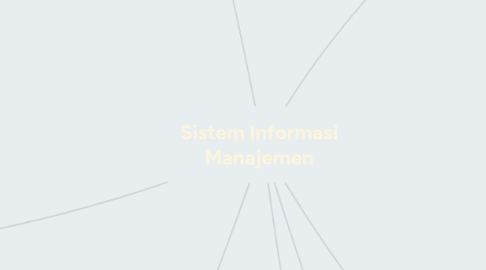
1. Managing data resources
1.1. Objectives
1.2. Virgin mobile australia case
1.2.1. Solution
1.2.2. Challange
1.3. Organizing data in a traditional file environment
1.3.1. File organization terms and concept
1.3.2. Problems with the traditional file environment
1.4. The database approach to data management
1.4.1. Database management system (DBMS)
1.4.2. The contemporary database environment
1.4.3. Hierarchical and network DBMS
1.5. Creating a database environment
1.5.1. Designing databases
1.5.2. An unnormalized relation for order
1.5.3. Normalized tables created from order
1.5.4. An entity relationship diagram
1.5.5. Distributing database
1.6. Database trends
1.6.1. Multidimensional data analysis
1.6.2. Data warehousing and data mining
1.6.3. Database and the web
1.7. Management opportunities, challenges, and solutions
1.7.1. Key organizational elements in the database environment
2. Information in business system today
2.1. Dimension of information system
2.1.1. Organizational dimension of information system
2.1.2. Perspective of information system
2.1.3. Contemporary approaches to information system
3. IT Infrastructure
3.1. Technology drivers of infrastructure evolution
3.2. Declining communication costs and the internet
3.3. IT infrastructure has 7 main components
3.3.1. Computer hardware platforms
3.3.2. Computer software platforms
3.3.3. Data management and storage
3.3.4. Networking/telecomunications platforms
3.3.5. Internet platforms
3.3.6. Consulting and system integration services
3.4. Making wise infrastructure investments
3.5. Competitive forces model for IT infrastructure investment
4. Consumer to consumer (C2C)
5. Global E-business and collaboration
5.1. Information technology enhances business process in two main ways
5.1.1. Increasing efficiency of existing processes
5.1.2. Enabiling entirely new processes that are capable of transforming the businesses
5.2. Transaction processing system
5.2.1. Perform and record daily routine transaction necessary to conduct business
5.3. Decision support system
5.3.1. Serve middle management
5.3.2. Support non-routine decision making
5.3.3. Often use external information as well from TPS and MIS
5.4. Business intelligence
5.4.1. Class of software applications
5.4.2. Analyze current and historical data to find patterns and trends and aid decision making
5.5. Executive support system
5.5.1. Support senior management
5.5.2. Address non-routine decisions
5.5.3. Incorporate data about external events
5.6. System from a constituency perspective
5.6.1. Transaction processing sytem
5.6.2. Management information system and decision-support system
5.6.3. TPS
5.6.4. Executive support system
5.7. Relationship of system to one another
5.7.1. ESS
5.7.2. Data may be exchanged between systems
5.8. Enterprise applications
5.8.1. System for linking the enterprise
5.8.2. Span functional areas
5.8.3. Execute business process across firm
5.9. Enterprise system
5.9.1. Collects data from different firm functions and stores data in single central data repository
5.10. Supply chain management (SCM)
5.10.1. Share information about
5.10.2. Manage firm's relationship with suppliers
5.11. Knowledge manajement system (KMS)
5.11.1. Support process for acquiring, creating, storing, distributing, applying, integrating knowledge
5.11.2. Collect internal knpwledge and experience within firm and make it available to employees
5.11.3. Link to external sources of knowledge
5.12. Alternative tools that increase integration and expedite the flow of information
5.12.1. Intranets
5.12.2. Extranets
6. Learning Objective
6.1. Organization and information system
6.2. Features of organizations
6.2.1. Organizational politics
6.2.2. Organizational Environment
6.2.3. Organizational Culture
6.3. Organizational Structure
6.4. How information system impact organization
6.4.1. Economic impacts
6.4.2. Behavioral impacts
6.4.3. The internet and organizations
6.5. Impact of system design & implementation
6.6. Value chain
6.6.1. Business value chain model
7. The digital firm: Electronic business and electronic commerce
7.1. Categories of electronic commerce
7.1.1. Business to customer (B2C)
7.1.1.1. Advantages of E-commerce
7.1.1.2. The benefits of disintermediation to the consumer
7.1.1.3. Interactive marketing and personalization
7.1.1.4. Website visitoring tracking
7.1.1.5. Web personalization
7.1.1.6. Collaborative filltering
7.1.1.7. Customer self service
7.1.2. Business to business (B2B)
7.1.2.1. Electronic data interchange (EDI)
7.1.2.2. Net marketplace
7.1.2.3. A private industrial network
7.1.2.4. A net marketplace
7.1.2.5. Electronic commerce payment systems
7.1.2.6. How intranets support electronic business

